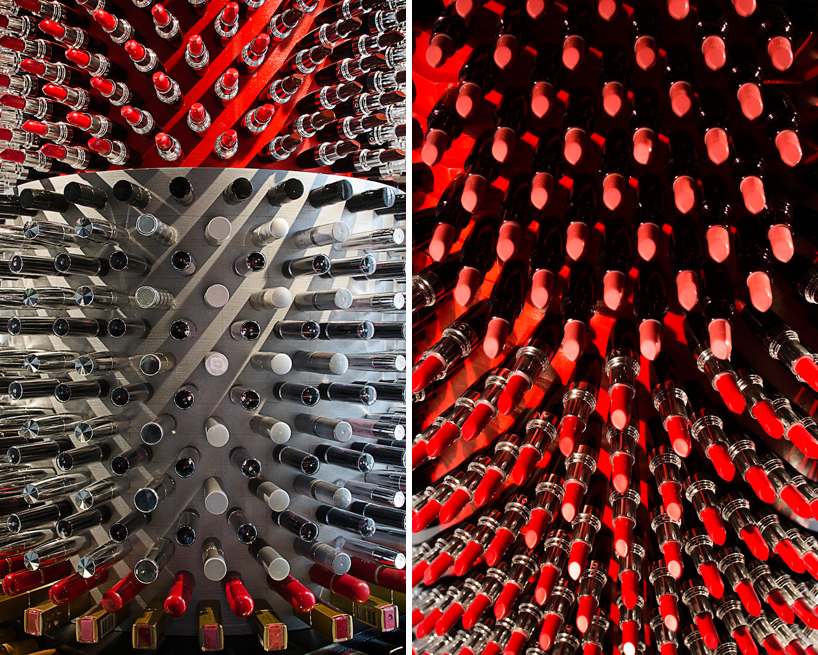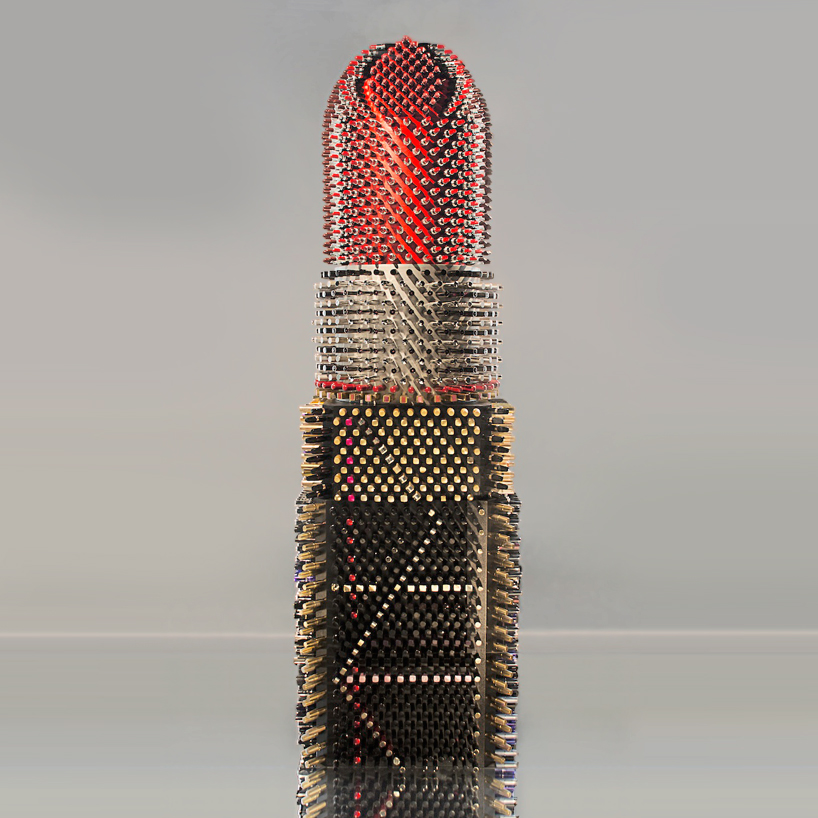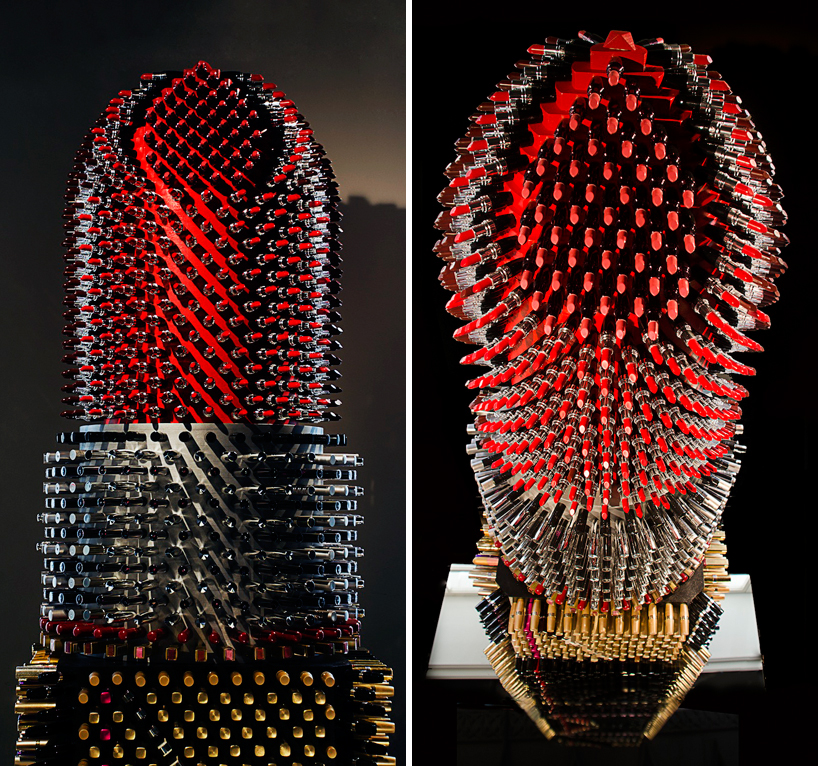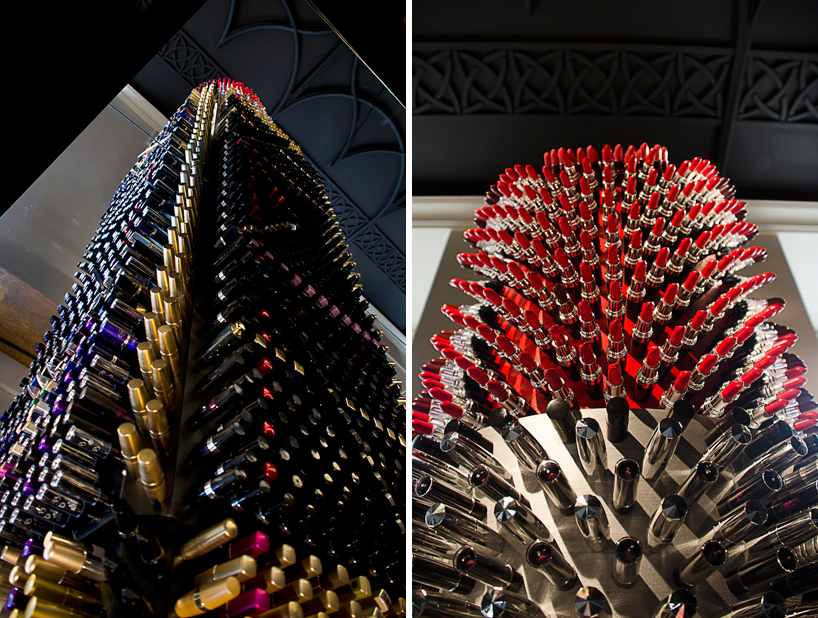A former colleague of mine sent this to me. Artist Agne Kisonaite created this 2.5 meter (roughly 8 feet) tall sculpture made out of over 5,000 used lipstick tubes with the aim of reminding people to be more thoughtful about the waste that is produced as a result of their purchases.

(images from designboom.com)
Here's a short video on the construction of the piece.
While I think the design is spectacular, I'm disappointed with the fact that the Kisonaite's message is addresses to consumers rather than makeup companies. Beauty aficionados like myself would happily recycle our lipstick tubes and other packaging if companies would make the outer cases out of recyclable material, or if they at least offered refillable packaging for all products instead of just for face powder products. Or they could all adopt the excellent "Back to MAC" program that MAC offers, which consists of consumers turning in six used containers, including lipstick containers, in exchange for one brand-new, free product.
One of the artist's blog entries on the scultpure states, "When you realise that there are 4 lipstick tubes being sold every second somewhere in the world, you really become worried. That’s why I want to transform lipstick tubes into an artpiece and to pay people’s attention towards recycling…I want make the society think about consumerism that is growing day by day. Having a look at an object that is 3 metres high will encourage people to think whether they really need everything they have in their handbags."
But why should the burden of going green be totally on the consumer? And a woman consumer at that. At first I thought the lipstick might be a general representation of consumer waste and was in intended for both men and women to think about what they buy – Kisonaite wants to make "society" think about consumerism. But her mention of "handbags" and the statistic about the sale of lipsticks (the majority to women, presumably) make me think she's targeting women and their beauty purchases specifically. Why shouldn't men, and women who don't buy makeup, think about all the things they buy too? Additionally, just because lipsticks sell fast doesn't mean the buyer isn't thinking about their purchases, especially (and ironically) those of us who have large amounts of makeup. For my non-collectible makeup, e.g., the stuff I actually use, I always make sure I don't already own the color and that I will actually wear it. Why do so many beauty blogs even exist? So that people can see swatches and read detailed reviews and thus make informed decisions about the product before they buy.
I do think we have some responsibility in what we decide to buy, along with other ways of helping the environment like reducing electricity and gas consumption. However, I think in the case of makeup, most of the responsibility lies with the companies themselves to make more eco-friendly packaging. As beauty product consumers, perhaps it's our duty to demand that the industry switch to recyclable packaging – our voices have definitely influenced companies before – and to think carefully before we add shiny new things to our beauty arsenal, but we shouldn't have to restrict our purchases until environmentally-friendly packaging is the norm.
Also, I'd like to point out that the project is sponsored by Avon, who provided some of the used lipstick tubes. I'm not sure I can take the message "consume responsibly" seriously when a major cosmetics company whose business it is to sell as many lipsticks as possible is backing it. I also think it's a tad insincere. Donating used lipstick tubes for an art project to raise awareness about consumerist excess isn't so meaningful when you're one of the companies that sold some of the lipsticks, contributing to the very waste the artist is trying to get people to consider, to begin with.
Thoughts?




